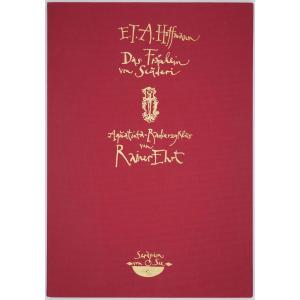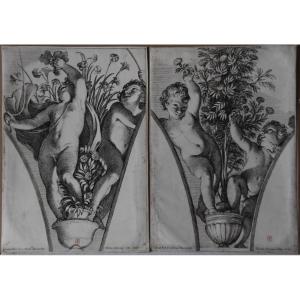- the right margin area somewhat bumped, slight traces of creasing
- Inversion -
Kurt Mühlenhaupt depicts himself as a black figure transcending the black picture frame. By doing so, he reverses the aesthetics of the woodcut. Instead of forming the lines of the otherwise bright face, the areas left standing are worked into the wood, giving the face an overall black appearance. This "anti-aesthetic," characteristic of Mühlenhaupt's art, introduces a new kind of realism to the picture. The eyes, beard, and cigarette stand out against the darkness, portraying Mühlenhaupt as an alert observer of a dark world.
About the artist
Kurt Mühlenhaupt was born and raised in a leafy colony in the Tempelhof district. He initially completed an apprenticeship as a model maker. After being drafted into the Wehrmacht, he was wounded in the war. In 1943, he took Emmi Stahlmann's art course at the West Private Art School. During the final days of the war, he was called up again, this time as a "cripple," and was wounded once more, leaving a lifelong mark on him. From 1946 to 1949, Mühlenhaupt studied at the University of the Arts Berlin under Maximilian Debus. After Karl Schmidt-Rottluff rejected him, Mühlenhaupt experienced a deep crisis that led to his admission to the Buch mental hospital. After being released, he earned a living by breeding animals until opening a junk store in 1958. The following year, he opened the artists' pub "Leierkasten" in Kreuzberg. Starting in 1963, he organized picture markets in front of his store, which evolved into the Kreuzberg art market. In 1965, he set up a printing press, and by 1969, he was living exclusively off of art. In 1971, he founded the group of Berlin painter-poets with Günter Grass, Aldona Gustas, Robert Wolfgang Schnell, and Wolfdietrich Schnurre. He acquired several farms to use as studios and moved to Bergsdorf-Zehdenick in 1990, where the Mühlenhaupt Museum is located today.
































 Le Magazine de PROANTIC
Le Magazine de PROANTIC TRÉSORS Magazine
TRÉSORS Magazine Rivista Artiquariato
Rivista Artiquariato